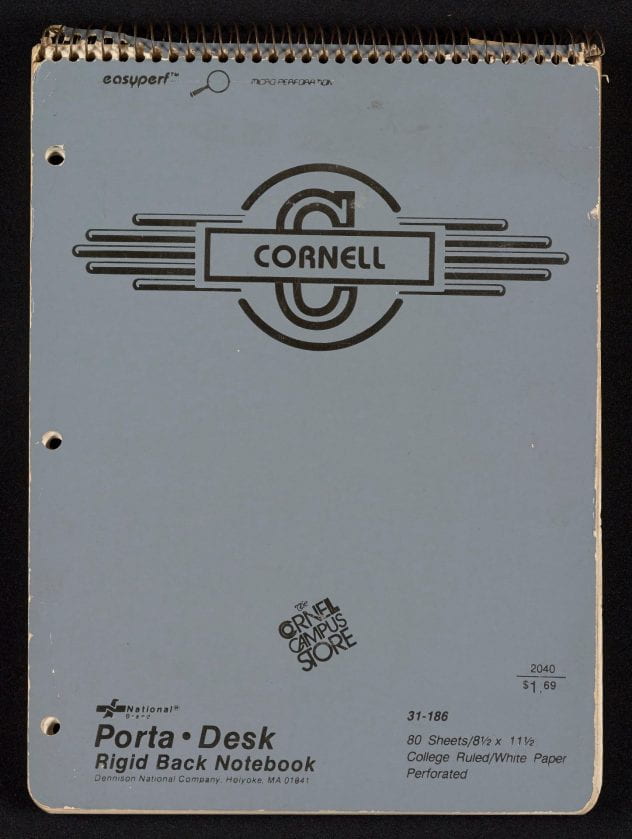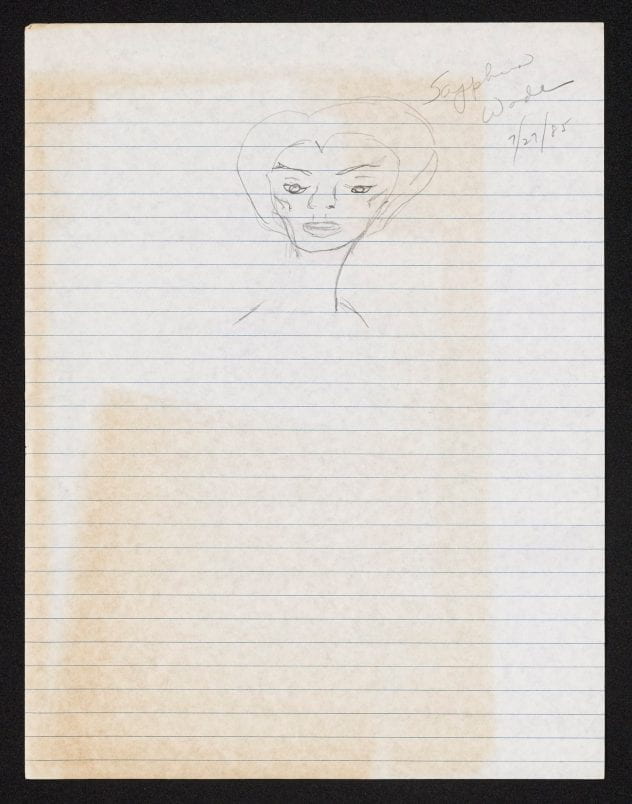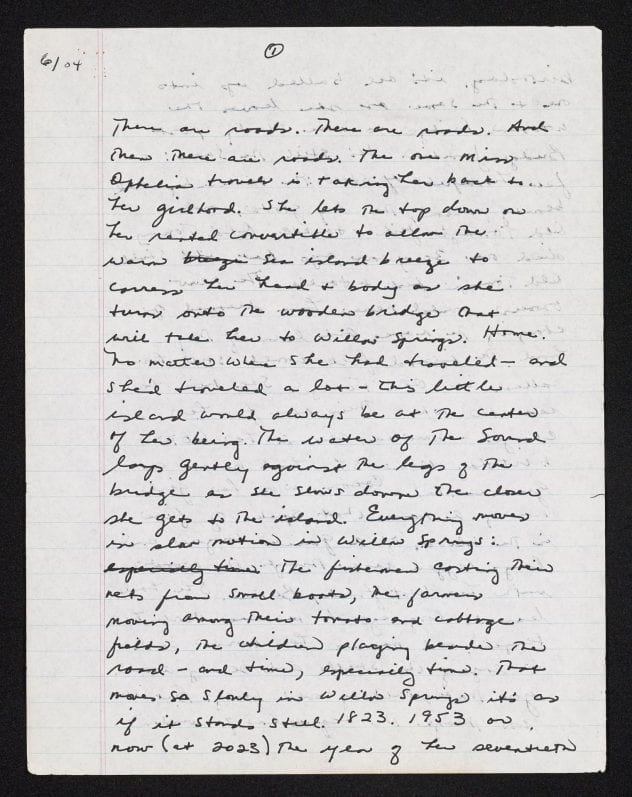Suzanne Edwards, Associate Professor of English, Lehigh University
July 3, 2020
Near the end of Gloria Naylor’s 1988 novel Mama Day, the title character uncovers an old document tucked into the rafters of the home where she lived as a child. The text, stained with water from the storms that batter the island, is fragmentary and difficult to read. Miranda (Mama) Day can decipher enough to know that the document records the sale of her ancestor, a captive African woman, to “Bascombe Wade of Willow Springs.”[1]
The decaying legal document can’t help Mama Day’s search for buried family memories that will help her to heal her beloved great-niece’s affliction: “The paper, itself, means nothing to Miranda. All Willow Springs knows that this woman was nobody’s slave. But what was her name?”.[2] In the ledger, her great-grandmother’s name, except for its first two letters, is unreadable. Instead, Mama Day finds Sapphira in her dreams.
As in Mama Day, there are fragmentary traces of Sapphira—and Naylor’s intention to write more about her—in the archive. These references span more than two decades. In 1981, a journal entry lays out a career’s worth of writing projects: “[A]fter Willie and Lester [of Linden Hills] will come Mom Day and somewhere after her Sapphira.”[3] A hand-drawn sketch of Sapphira Wade dated July 17, 1985 appears among the research materials for Mama Day.[4] And, in a 2006 letter to her close friend Julia Alvarez, Naylor writes that she had made other such sketches over the years: “[Sapphira’s] face first came to me when I was working the midnight shift on a hotel switchboard back in the late 70’s. I drew it and put it away, knowing that she was my muse.”
In that same letter from 2006, Naylor says that she is working on her long-planned novel about Sapphira, beginning with poems that she wrote to share at a friend’s literary salon. She concludes her letter with two lines from one of those poems—“A woman must tell stories/ to save her life.” The full text of these poems is not among her collected papers.
The archive does include an unfinished manuscript for the novel Naylor planned to title Sapphira Wade. In this 131-page handwritten document, however, Sapphira’s name appears only once, in a section written in June 2004.
The single invocation of Sapphira is part of a brief frame narrative, set in 2023, in which Sapphira’s great-great-great-granddaughter Cocoa returns to Willow Springs. Visiting her ancestors’ graves, Cocoa (or Miss Ophelia, as she is called at seventy years old) seeks a history kept by the dead: the events leading up to 1823, when “Sapphira Wade, a slave woman who was more than a slave,” somehow persuaded Bascombe Wade, the man who bought her at auction in 1819, to deed the island to the Black people living there.[5]
Naylor wrote the remainder (and the majority) of the unfinished Sapphira Wade two years later, in August 2006. However, that section of the manuscript tells not Sapphira’s story, but Bascombe’s—beginning with his birth in northern Norway in 1789 and breaking off in 1818, the year before Naylor’s plot outline indicates that he would encounter Sapphira in Savannah, Georgia.[6]
Written on lined legal pads, the manuscript is similar to early drafts of Naylor’s previous novels. Her writing process typically began with extensive research and fragmentary drafts of key scenes. In the case of Sapphira Wade, a spiral-bound steno pad documents these early phases of Naylor’s writing process.
Many of these handwritten notes list historical details pertinent to the nineteenth-century Norway setting: glossaries of words in Norwegian and northern Sámi, descriptions of dishes popular in fishing villages and urban centers, and annotated summaries of educational books published in Norway before 1800. Other pages offer a glimpse of key plot events or phrases. The steno pad and the research materials Naylor painstakingly assembled thus record the significant intellectual and creative work that had gone into the project before she started writing the 31,000-word draft.
After Naylor composed the draft, she also returned to it to make revisions. Numerous small edits in Naylor’s own hand, most concerned with syntax and word choice, mark the manuscript throughout. The fact that these revisions are minor suggests that Naylor was satisfied, overall, with the narrative structure and characterization at that point in her writing process.
Still, the manuscript is plainly unfinished. When it was donated with the rest of the archive, the manuscript was in a folder labeled, “Opening chapter of Sapphira Wade,” confirming that Naylor planned to write much more. Further, some of Naylor’s marginal comments in the draft pose questions about historical verisimilitude, consistent diction, or alternate possibilities for structuring a bit of dialogue or a scene. These notes suggest that Naylor was looking toward a more substantive revision, perhaps after she had completed a draft of the entire novel.
Even though Sapphira Wade scarcely appears in the manuscript that bears her name, copious research materials in the archive do give a broad sense of the historical context in which Naylor planned to set Sapphira’s story. These materials include handwritten notes and photocopied articles or book chapters about the nineteenth-century western Sahel.
In many cases, these materials are extensively underlined and annotated in Naylor’s hand. Thus, they provide some insight into topics Naylor was researching in order to tell Sapphira’s story. These include, for instance, indigenous African spirituality and the spread of Islam in West Africa from the tenth through the nineteenth centuries. She researched at length the differences between the cattle-herding Wodaabe who practice an animist spirituality and the Fulani people who settle in villages and adhere more strictly to Islam. She also photocopied and annotated several chapters from The Caliph’s Sister, a biography describing Nana Asma’u’s influence on her father and brother, who founded and ruled the Sokoto Caliphate, beginning in 1804.
Perhaps the biggest question the archive raises is whether Naylor, after decades of dreaming and writing about Sapphira, ever wrote her story. If she did so, that document is not among the materials included in her archive.

Naylor’s decision to donate the manuscript, along with the rest of her papers, to Sacred Heart University in 2009, fewer than three years after she wrote the draft, leads me to wonder whether she planned to halt the Sapphira Wade project entirely, whether she merely planned to abandon this draft, or whether she kept copies for herself and continued to work on the novel. The fact that Naylor donated the original handwritten draft, rather than a copy, and that she also donated the extensive research materials that she had assembled implies, I think, that she was moving away from the project—at least as she conceived it in 2006.
Still, it’s significant that Naylor did not destroy the manuscript—as authors often do. Her inclusion of the draft and research materials in her archive suggest that, whatever she planned to do next, she nonetheless hoped people might someday read and reflect on what she had completed. The arrangement of the materials in the archive, as Sacred Heart received them, included a section of materials clearly devoted to Sapphira Wade, an organizational choice designed to bring researchers’ attention to them.
I wonder whether we might read the fragmentary traces of Sapphira Wade in the archive as consistent with Naylor’s characterization of the figure who inspired her literary production from the very start. In the archive, as in Mama Day, Sapphira Wade cannot be recovered from a fragmentary document that never fully represented the woman it purported to describe. Perhaps, Naylor’s archive echoes what her 1988 novel underscored: dreams and legends remain more reliable sources.
[1] Gloria Naylor, Mama Day (New York: Ticknor and Fields, 1988), 280.
[2] Ibid.
[3] Gloria Naylor, Journal Entry, 11 December 1981, Box 18, Folder 1, Gloria Naylor Archive, Sacred Heart University, Fairfield, CT.
[4] Gloria Naylor, Sapphira Wade Sketch, 17 July 1985, Box 20, Folder 11, Gloria Naylor Archive, Sacred Heart University, Fairfield, CT.
[5] Gloria Naylor, Sapphira Wade, unfinished manuscript, June 2004, Box 40, Folder 1, Gloria Naylor Archive, Sacred Heart University, Fairfield, CT.
[6] To read selected excerpts from the Sapphira Wade manuscript, see Suzanne M. Edwards and Trudier Harris, “Gloria Naylor’s Sapphira Wade: An Unfinished Manuscript from the Archive.” African American Review 52.4 (Winter 2019), 323-40.

